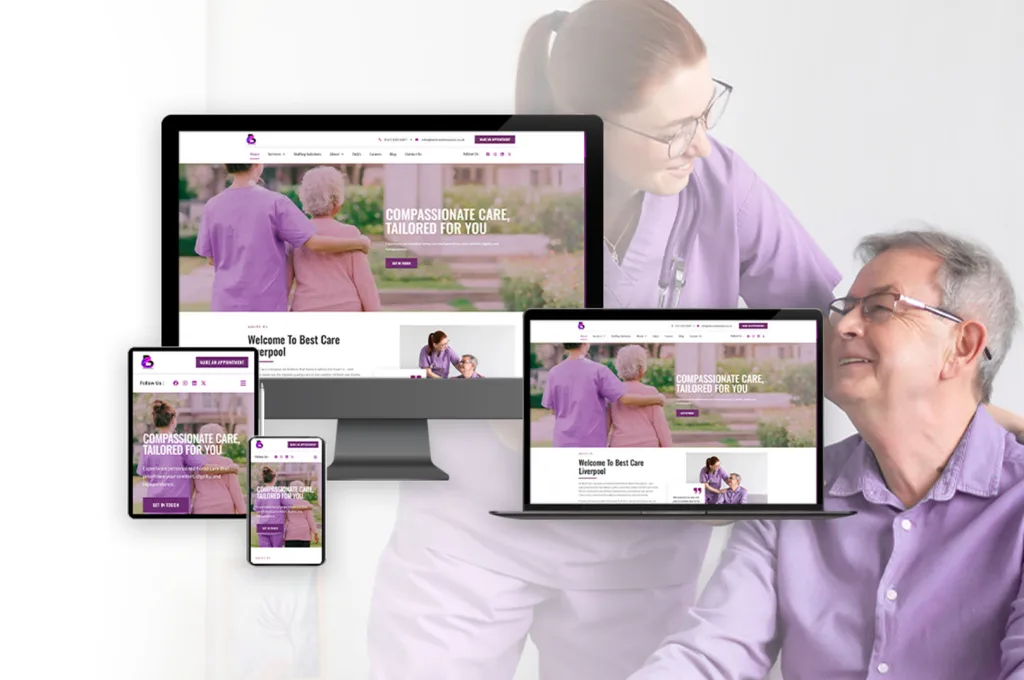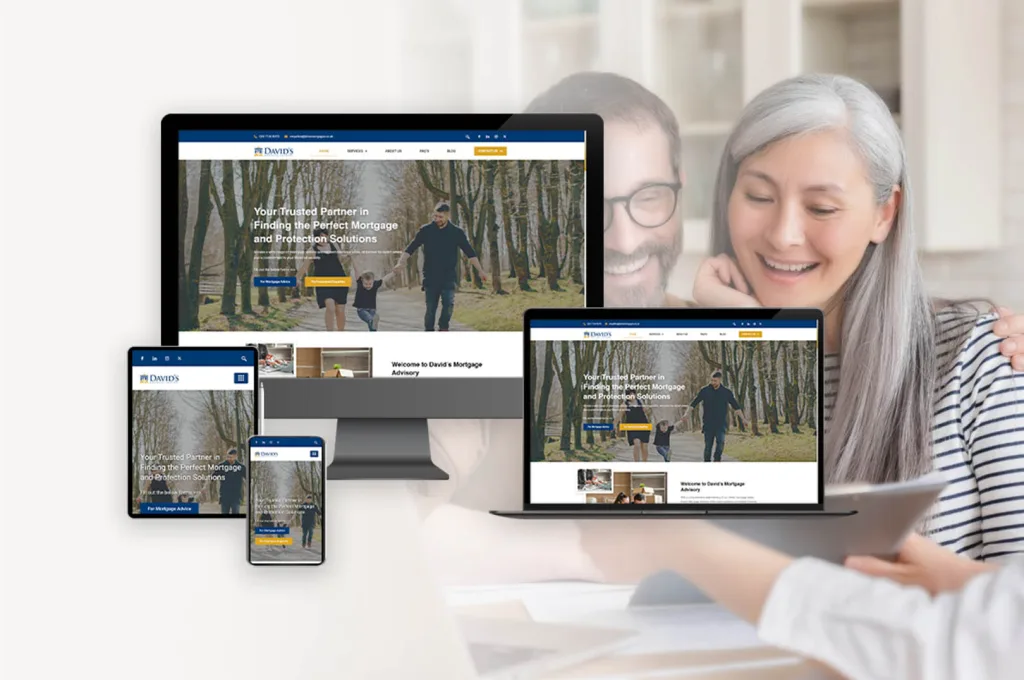How To Use Your Website To Make a Lasting Impression On Your Customers?
How To Use Your Website To Make a Lasting Impression On Your Customers?
Introduction
Having a website is a great way to make a lasting impression on your customers. It can be used to showcase your products and services, provide information about your company, and even help you build relationships with your customers. In this guide, we will discuss how to use your website to make a lasting impression on your customers. We will cover topics such as creating a user-friendly website, optimizing your website for search engines, and using social media to engage with your customers. By following these tips, you can ensure that your website leaves a lasting impression on your customers.

How to Use Your Website to Create a Positive First Impression
Creating a positive first impression on your website is essential for any business. It can be the difference between a potential customer staying on your website or leaving it. Here are some tips to help you create a positive first impression on your website:
1. Use a Professional Design: Your website should have a professional design that is easy to navigate and visually appealing. Make sure the design is consistent throughout the website and that all the elements are in harmony.
2. Optimize for Mobile: Make sure your website is optimized for mobile devices. This will ensure that your website looks great on any device and that visitors can easily access your content.
3. Include Quality Content: Quality content is essential for creating a positive first impression. Make sure your content is well-written, informative, and engaging.
4. Use High-Quality Images: Images are a great way to draw attention to your website and create a positive first impression. Make sure to use high-quality images that are relevant to your content.
5. Include Contact Information: Make sure to include contact information on your website so that visitors can easily get in touch with you. This will help create a sense of trust and reliability.
By following these tips, you can create a positive first impression on your website and ensure that visitors stay on your website and explore your content.
How to Leverage Your Website to Build Customer Loyalty
Building customer loyalty is essential for any business, and leveraging your website is a great way to do it. Here are some tips to help you get started:
1. Offer rewards and incentives. Customers love to be rewarded for their loyalty, so consider offering discounts, free shipping, or other incentives to encourage them to keep coming back.
2. Make it easy to sign up. Make sure your website has a simple sign-up process that allows customers to quickly and easily create an account. This will make it easier for them to access their rewards and other benefits.
3. Make it easy to find information. Make sure your website is easy to navigate and that customers can quickly find the information they need. This will help them feel more comfortable and confident when making purchases.
4. Make it personal. Use customer data to personalize the experience for each customer. This could include sending personalized emails, offering tailored discounts, or providing product recommendations based on past purchases.
5. Make it interactive. Give customers the opportunity to interact with your brand by offering online forums, surveys, or other interactive features. This will help them feel more connected to your business and more likely to return.
By leveraging your website to build customer loyalty, you can create a more positive customer experience and increase customer retention. With the right strategies in place, you can create a loyal customer base that will help your business grow.
Tips for Optimizing Your Website for Maximum Engagement
1. Make sure your website is mobile-friendly: With the majority of web traffic now coming from mobile devices, it is essential to ensure that your website is optimized for mobile. This means making sure that your website is responsive and that all content is easily accessible on any device.
2. Use high-quality visuals: Visuals are a great way to engage visitors and draw them into your website. Make sure to use high-quality images and videos that are relevant to your content.
3. Keep your content fresh and up-to-date: Make sure to regularly update your website with fresh content. This will help keep visitors engaged and coming back for more.
4. Make sure your website is easy to navigate: Make sure your website is easy to navigate and that visitors can find what they are looking for quickly and easily.
5. Use calls to action: Calls to action are a great way to encourage visitors to take action on your website. Make sure to include calls to action throughout your website to encourage visitors to take the desired action.
6. Optimize for search engines: Make sure to optimize your website for search engines so that it can be easily found by potential visitors. This includes using relevant keywords and phrases, as well as optimizing your website’s structure and content.
7. Utilize social media: Social media is a great way to engage with visitors and promote your website. Make sure to include social media buttons on your website and link to your social media accounts.
8. Monitor and analyze your website’s performance: Make sure to monitor and analyze your website’s performance to identify areas for improvement. This will help you optimize your website for maximum engagement.
Strategies for Utilizing Your Website to Increase Customer Retention
1. Offer Loyalty Programs: Loyalty programs are a great way to reward customers for their repeat business. Offer discounts, free shipping, or other incentives to customers who make multiple purchases.
2. Send Out Regular Newsletters: Keep customers informed about new products, sales, and other news by sending out regular newsletters. This will help keep customers engaged and remind them to come back to your website.
3. Create a Community: Create a community on your website where customers can interact with each other and share their experiences. This will help build a sense of loyalty and encourage customers to come back.
4. Offer Personalized Content: Personalize content for customers based on their past purchases and interests. This will make customers feel valued and appreciated, and will encourage them to come back.
5. Utilize Social Media: Use social media to engage with customers and keep them informed about new products and promotions. This will help build relationships with customers and keep them coming back.
6. Provide Excellent Customer Service: Make sure that customers have a positive experience when they interact with your website. Respond quickly to customer inquiries and provide helpful advice. This will help build trust and loyalty.
Best Practices for Using Your Website to Enhance Your Brand Image
1. Establish a Clear Brand Identity: Your website should be a reflection of your brand identity. Make sure that your website design, content, and messaging are consistent with your brand’s mission, values, and goals.
2. Create Quality Content: Quality content is essential for creating a positive brand image. Make sure that your website content is well-written, informative, and engaging.
3. Optimize for Search Engines: Optimizing your website for search engines will help ensure that your website is visible to potential customers. Make sure to include relevant keywords and phrases in your content and use SEO best practices.
4. Make Your Website Mobile-Friendly: Mobile devices are becoming increasingly popular, so it’s important to make sure that your website is optimized for mobile devices. Make sure that your website is responsive and easy to navigate on mobile devices.
5. Use Social Media: Social media is a great way to engage with your customers and build your brand image. Make sure to link to your social media accounts from your website and post regularly.
6. Monitor Your Website Performance: Monitor your website performance to ensure that it is running smoothly and efficiently. Use analytics tools to track website performance and make improvements as needed.
7. Keep Your Website Updated: Make sure to keep your website up-to-date with fresh content and design updates. This will help ensure that your website is current and relevant.
8. Provide Quality Customer Service: Quality customer service is essential for creating a positive brand image. Make sure to respond to customer inquiries in a timely manner and provide helpful information.
Conclusion
Making a lasting impression on your customers is essential for any business. By using your website to its fullest potential, you can create a memorable experience for your customers that will keep them coming back. Utilizing the right design, content, and features can help you create a website that is both attractive and functional. Additionally, by providing helpful customer service and engaging with your customers on social media, you can create a positive and lasting impression that will keep your customers coming back.
Make a lasting impression on your customers by using your website to its fullest potential! With Elegant, you can create a website that is both visually appealing and easy to navigate. From customizing the look and feel of your website to optimizing it for search engines, Elegant has everything you need to make a lasting impression on your customers. Click here to get started today!
How To Use Your Website To Make a Lasting Impression On Your Customers? Read More »








